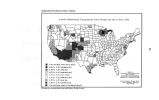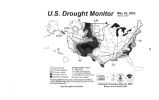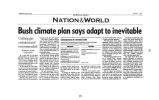| OCR Text |
Show 56 Nations! Drought S/ Sitigjnion Center University of N(> l> rsska~ Uncoin Mitigation makes sense. Former FEMA director James Lee Witt suggested that for each dollar invested in mitigation, two doHars are saved in impacts, in fact, the cost/ benefit ratio for mitigation vs. post- disaster assistance Is not well known. More research needs to be undertaken on this critical aspect of natural hazard mitigation. Local, state, ana federal government seem to agree on the benefits of mitigation, and there is a significant trend toward greater emphasis on pre- event actions. Mitigation actions implemented in recent years can foe classified fay type as follows: Categories of Drought litigation Actions * Monitoring and assessment programs » Water supply augmentation * Demand reduction/ water conservation * Public awareness/ education programs » Water use conflict resolution * Drought vAmn'mg * Legislation/ policy changes * Technical assistance on water management At the state level, the number of states with drought plans has increased from 3 in 1982 to 33 in 2002, with an additional 5 states in the plan deveiopment process. More states are stressing mitigation over emergency assistance and preparedness over reactive, crisis management. HI Slates with plans emphasizing response E3 States with plans emphasizing mitigation HI States developing long- term plans O States delegating drought, planning to local authorities m States without drought plans Status of drought planning, May 2002 % A f |


























































































